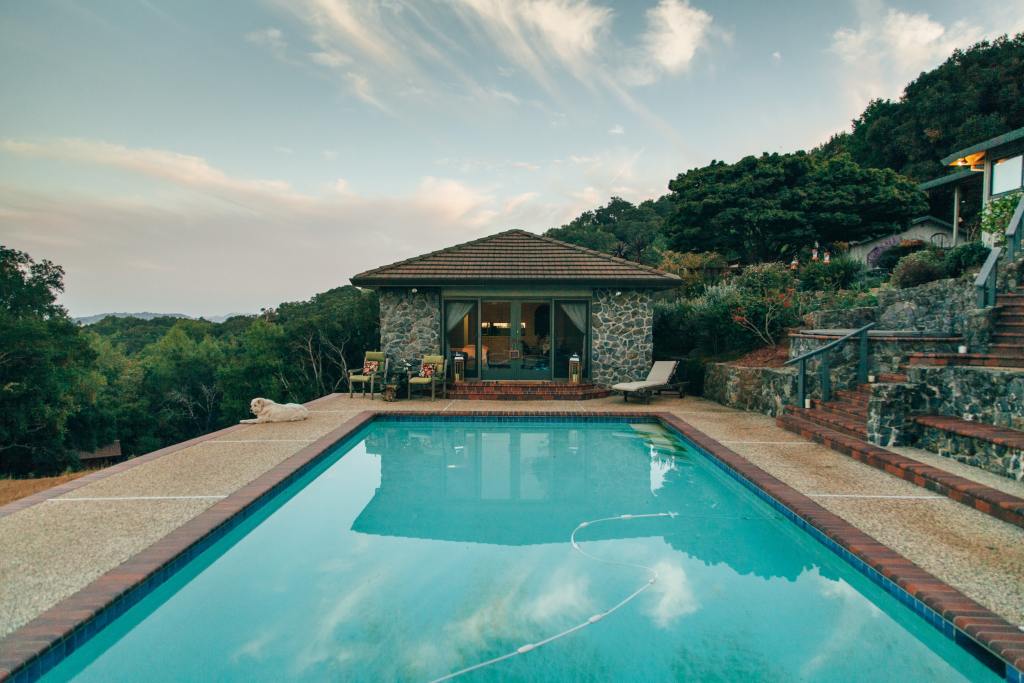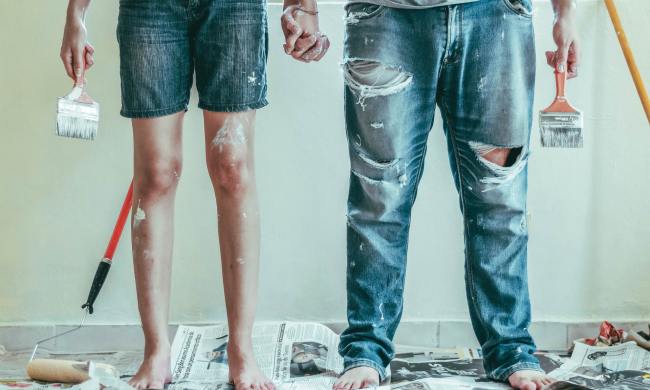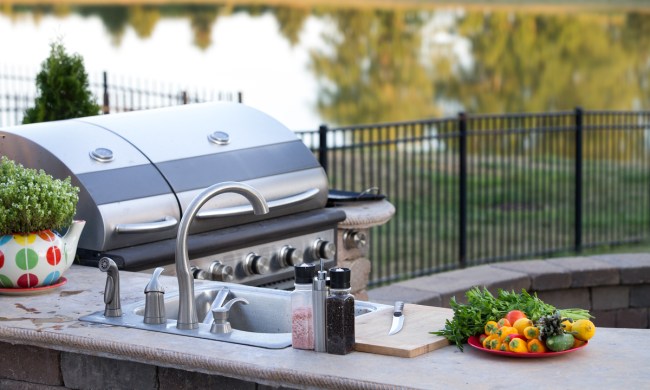Most pools that people enjoy during the summer exclusively use chlorine to disinfect the water. However, there is another, less-used option that may be better: saltwater pools. When people hear that phrase, they may think of the ocean. In reality, the salt in saltwater pools is difficult to smell or taste because only a small amount of salt is used in the pool. Installing a saltwater pool may seem daunting, but they aren’t any more difficult to build than chlorine pools and may provide more benefits.

The benefits of saltwater pools
Saltwater pools have numerous benefits over chlorine pools. Here are just a few:
- Less chlorine. Saltwater pools still use chlorine to disinfect the water, but saltwater pools use a natural, salt-based form of chlorine instead of the chemical variety. The salt sanitizes the pool through a process called electrolysis, and is a gentler, more effective form of chlorine.
- Hypoallergenic. Some people are allergic to chemical chlorine, but have no issues with saltwater pools. If you have an itchy throat, irritated eyes, and sniffles when jumping into a pool, it may be time to start thinking about switching to salt.
- Simple maintenance. Saltwater pools still require maintenance, but less so than chemical chlorine setups. A saltwater generator has a salt cell built-in, automatically adding salt to the pool at set intervals. Missing a week or two of pool maintenance is not the end of the world, compared to a chemical chlorine process.
- More cost effective. When you have a saltwater pool, you only need to refill the salt cell once every 2 to 5 years, compared to replacing the chemical chlorine every few months.

How to start a salt-water pool
You’ve decided to make the leap to a saltwater pool. Congratulations! It isn’t a difficult transition. Follow these steps and soon you’ll have a salt-water pool that’s gentler on your eyes, skin, and pool equipment.
Determine your pool’s gallon capacity
Before you do anything, you need to figure out how many gallons of water your pool holds. This doesn’t need to be exact, but it should be a fairly precise estimate. Thankfully, you don’t need to have a bachelor’s degree in math to figure this out. Use handy online calculators, like this one from Royal Swimming Pools, to figure out your gallon capacity.
Test your pool’s chemical levels
The reason you need to know your pool’s gallon capacity is because it determines how much of each chemical you will add after testing your pool so the water is balanced. You can find water testing kits everywhere that pool supplies are sold, including Walmart and Amazon. These are the chemicals you’ll be testing for and the ideal ranges:
- Alkalinity (80-120ppm)
- pH (7.2-7.6)
- Chlorine (1-3 ppm)
- Cyanuric Acid (50-80 ppm)
- Calcium Hardness (200-400 ppm)
- Metals (0)
- Salt (follow your chlorinator’s manual. Typically around 3200 ppm)
Your water needs to be balanced with these ideal chemical ranges before turning your salt chlorinator on.
Add the salt
You have finally arrived at the most important step: It’s time to add the salt! Check the manual your salt chlorinator came with to determine the best dose for your pool. The average salt level is ~3200 ppm. Also, make sure you’re using the correct salt; table salt won’t work here. Specifically, look for Sodium Chloride that is at least 99% pure, preferably higher. That 1% may not seem like a lot, but, after dumping bags of salt, that 1% adds up.
Before you start adding the salt, you need to know how many pounds to add. Again, there are online calculators that help, such as this one from Pool Research. You will need to know how many gallons of water your pool holds, the current salt PPM, and the desired salt PPM. For example, let’s say your pool holds 6,000 gallons of water, the current salt PPM level is 1000, and your desired salt PPM level is 3200; that means, according to the calculator, you will need to add 110 lbs of salt, or almost three average-sized bags
Optional: Add pepper
First salt and now pepper? Don’t worry, we are not talking about the table pepper you have with dinner. This step is optional, but we recommend investing the money. Regular use of pool pepper has many benefits, including:
- Improves sanitizer effectiveness.
- Enhances water clarity.
- Helps curb pH fluctuations.
- Increases the life and performance of your salt chlorinator.
If this sounds like a worthwhile investment then add the pool pepper directly in front of the jet or sprinkle it over the pool surface. Add 1 container of pool pepper for every 10,000 gallons of water.

Final thoughts
Saltwater pools are becoming incredibly popular for their sensibility, cost, and health benefits. Chemical chlorine can be rough on the eyes and skin, and swimmers might be allergic to the chemical. Saltwater pools remove almost all of the negatives of fully chlorine pools and are even easier to setup. If you follow these steps, you’ll be diving into summer in no time.


